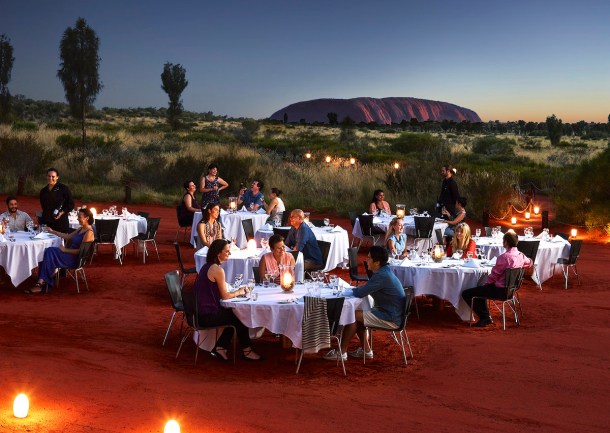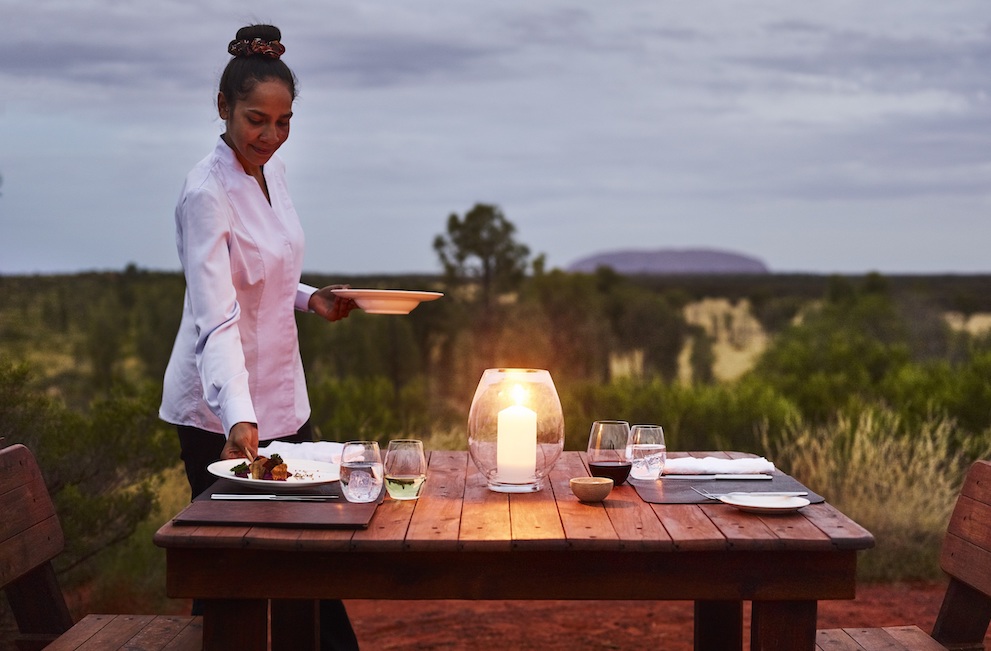
After being forced to close is doors due to COVID-19 and resulting border restrictions, Ayers Rock Resort reopened its doors in August to welcome interstate travellers back to Uluru.
But while it was closed, the Northern Territory property certainly wasn’t laying dormant. Refurbishment works were moved forward and digital transformations got underway.
Now, Ayers Rock Resort is enjoying the buzz of returning visitors who come to stay at one of the many accommodation options, dine under the stars at Sounds of Silence or Tali Wiru, view Bruce Munro’s spectacular Field of Light installation and experience Uluru-Kata Tjuta National Park.
As borders reopened to parts of the country once again, the resort was tasked with getting Aussies to revisit their bucket list.
“Uluru, as we discovered…was on everyone’s bucket list, but not the to-do list,” says Voyages Indigenous Tourism Australia CEO Matthew Cameron-Smith.
“So our job was to move it forward and get them to come now.”
Welcoming a new type of visitor
With international travel off the cards, many Australians are now taking the opportunity to tick Uluru off their bucket list, or to visit again.
The changing travel climate has also seen guests stay longer in Uluru than pre-COVID, when the average stay was 1.75 days.
According to Cameron-Smith, interstate visitors are now taking the time to immerse themselves in the destination.
“Now they’re looking at art, they’re shopping, they’re relaxing, they’re laying by the pool, they’re having a meal,” he says.
“They’re doing the afternoon sunset tour, the next day they’ll do the morning tour and at night they’ll do Sounds of Silence.”
Repeat visitors have also increased this year, thanks to reduced airfares and accommodation packages.

A new-look resort
Visitors to Uluru will experience a refreshed Ayers Rock Resort, after Voyages decided to bring forward its planned multi-million-dollar renovations.
Among the updates, the five-star Sails in the Desert has been refurbished with all-new guest rooms and suites and a new-look lobby, pool and restaurant.
The airport also underwent some changes, including new screening areas to improve the transit process.

Supporting Indigenous communities
Cameron-Smith said the return of visitors to the resort has given the Voyages team the ability to reengage Australians in indigenous culture, and to support the local indigenous community through its jobs and training programs.
This month, Voyages will recognise 62 graduates who have completed a traineeship with the company’s National Indigenous Training Academy (NITA).
The program has now enabled more than 500 young indigenous Australians complete their Certificate III and IV in the hospitality, horticulture and retail sectors.
Cameron-Smith says some of those graduates have gone on to work at other venues, but many have stayed with either Ayers Rock Resort or Voyages’ Queensland property, Mossman Gorge.
“Our employment ratio right now at Ayers Rock Resort is 44 per cent Indigenous, which is the highest it’s been for about two years,” he says.
“If you look at Mossman Gorge…we’re at 68 per cent Indigenous employment.”
The acclaimed Tali Wiru dining experience is also now operated 100 per cent by Indigenous Australian people.

Enhanced technology
Ayers Rock Resort has also unveiled a new-look website and app, thanks to a major digital transformation across Voyages Indigenous Tourism Australia.
Designed to improve the guest experience and enhance guest safety measures, the app enables guests to check in and out of the hotels remotely, make restaurant reservations, order in-room dining, plan tours and create activity itineraries.
The app also includes a chat bot called Malpa (meaning ‘friend’ or ‘helper’), which is programmed to help with specific questions and to offer translations in the Pitjantjatjara language used by the local Anangu people of Uluru.
The app will also feature an interactive map of the surrounding area, including directions to key points of interest, listings and descriptions of places to go, services offered and retail options, with a ‘wish list’ facility available.
As remaining border restrictions ease across Australia, Ayers Rock Resort is refreshed and ready to welcome new and returning visitors to Uluru.
“It is just so encouraging to see Australians fall in love with their own country again,” says Cameron-Smith.


